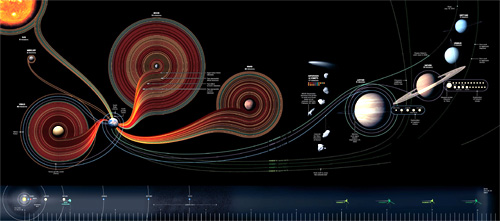In this combined image, the colored dots show the movement of 2012 VP113. Each image was taken two hours apart
Dwarf Planet Discovered At Solar System's Edge -- CNN
(CNN) -- For anyone holding out hope of Pluto being reinstated as a major planet, you should probably do as they say in the movie "Frozen" and "let it go."
But here's a new exciting find from the far reaches of our solar system: Astronomers have discovered a dwarf planet that's even farther away than Pluto -- so far, in fact, that its orbit reaches into a new edge of the solar system.
The dwarf planet's current name is 2012 VP113, and it is located in a "wasteland or badland of the solar system," said astronomer Chad Trujillo, head of adaptive optics at Gemini Observatory in Hawaii and co-discoverer of this object. His study was published Wednesday in the journal Nature.
"The big question is, how is this formed? How can you get an object out there?" he said. "We really don't know an answer to that yet."
Read more ....
More News On A Dwarf Planet Being Discovered At The Solar System's Edge
New dwarf planet hints at giant world far beyond Pluto -- New Scientist
Does our solar system have a SUPER EARTH? Cluster of rock at its edge hints at existence of an enormous planet -- Daily Mail
New Dwarf Planet Found at Solar System's Edge, Hints at Possible Faraway 'Planet X' -- Space.com
New dwarf planet found sneaking through the inner Oort Cloud -- Ars Technica
New Dwarf Planet Redefines Edge of Our Solar System -- Discover
Dwarf Planet Discovery Hints at Hidden World Orbiting Solar System -- National Geographic
A New Planetoid Reported in Far Reaches of Solar System -- New York Times
Dwarf planet discovery hints at a hidden Super Earth in solar system -- The Guardian
Icy body found orbiting far from Sun -- BBC
Planet 'Biden:' Astronomers Find New Planet at Edge of Solar System -- US News and World Report
New Dwarf Planet ‘Biden’ Discovered: 2012 VP113 Is The Most Distant ‘Family Member’ Of The Solar System -- IBTimes
Distant new world may point to undiscovered planets in solar system -- The Guardian











